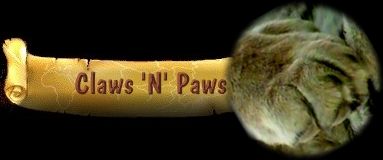
Claws, Paws & Pug Marks - Page 1&2: Claws| 3&4: Pug Marks | 5&6: Declawing

Claws, Paws & Pug Marks -
Page 1&2: Claws|
3&4: Pug Marks
| 5&6: Declawing
Pug mark census taking:Pug marks may be used to count the cats in a given area, but are not a certain means of identifying individual tigers. The appearance of each print changes in different soil types. For example:
Unless a tiger has an obvious foot irregularity reliable identification simply is not possible and one tiger can easily be miscounted as several. The majority of pug marks are copied from the front paws. This is because they are more likely to sustain an injury so rendering the animal more easily identifiable. Pug mark census counts are also rendered inaccurate by natural occurrences. Hard rocky areas contain no prints and any excess of greenery or leaf litter completely obscures pug marks. In the Sundarbans the tides erase prints every 24 hours. |
Experts tend to search for marks alongside rivers and paths. Impressions taken from soft soil are avoided unless there is little other option. To increase accuracy, statistical software is utilised to estimate of tiger numbers. The total is then cross checked with custom-made software and the presence or absence of tigers marked on maps. The GPS, or global positioning system, serves as a further cross-check. Amur (Siberian) tiger pug mark:The size of
this pug mark will vary in size depending upon your screen resolution
and monitor size. Printers will also alter the size depending
upon your print settings. Foot pads:A tiger has very soft foot pads and a hungry cat cannot hunt successfully if the prey is standing in a rocky uneven area, or the ground is baking hot. Pads can easily become cut or blistered on these surfaces. |
|
Claws, Paws & Pug Marks - Page 1&2: Claws| 3&4: Pug Marks | 5&6: Declawing Taxonomy
| Whiskers
| Hearing & Ear Spots | Eyesight
| Smell | Teeth
| Communication | Flehman
| Genetics | |
|
Photography
With Thanks To Aditya Singh & Tiger Territory (Photo 1) |